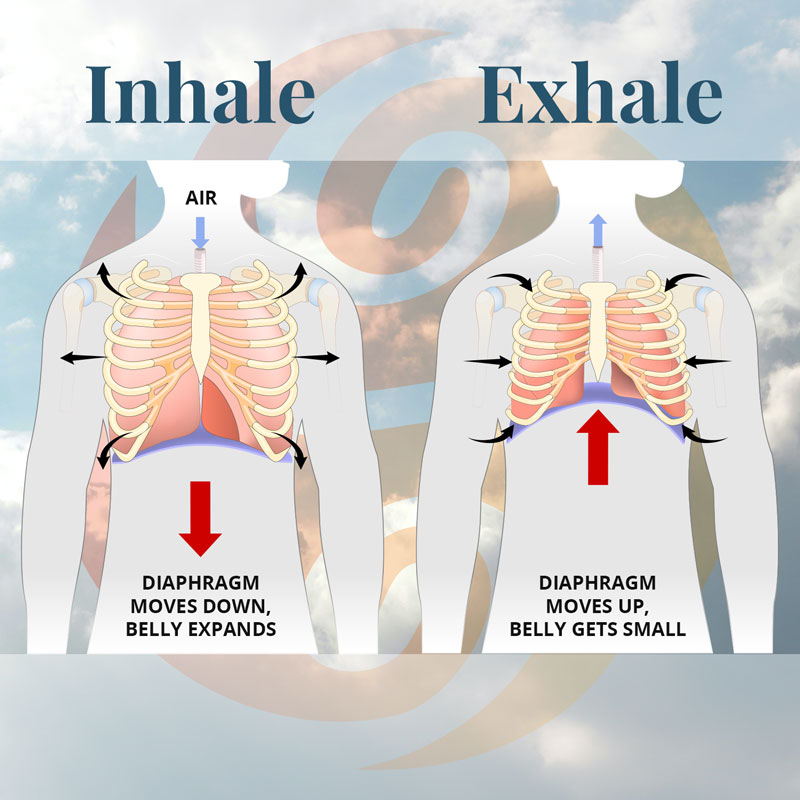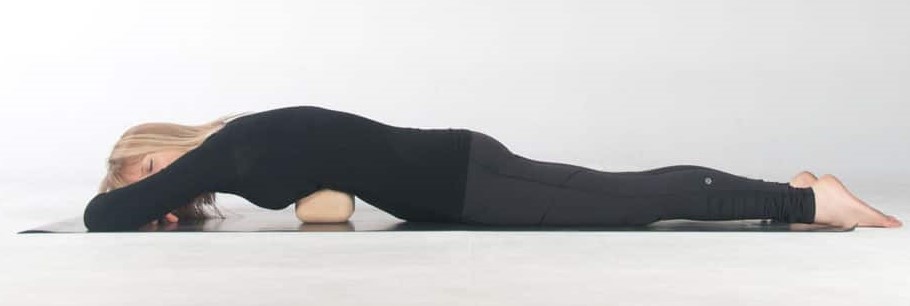What is Block Therapy? – The Second Foundation

Last week, we discussed the first foundation of Block Therapy, the fascia system, to begin building a solid foundation of what Block Therapy is. This week, we are discussing the second basic foundation that Block Therapy is built upon; the diaphragm and the importance of diaphragmatic breathing.
The diaphragm is an interesting muscle, as it is both a voluntary and an involuntary muscle. As an involuntary process, our body will continue to encourage breathing, even as we sleep. As a voluntary process, we can consciously perform the act of diaphragmatic breathing, strengthening our diaphragm and the postural foundation of the rib cage.
The diaphragm muscle is the one designed to pull air into the lungs to acquire the oxygen that feeds the entire body. It also functions to exhale the carbon dioxide and other waste. The beauty of this lies in the fact that the majority of the alveoli (oxygen receptor sites) are concentrated at the base of the lungs. So when we breathe with the diaphragm, air gets pulled deeply enough into the lungs to reach this bed of abundance, or bed of life. When we walk around holding our bellies in, we are forcing an unnatural breathing pattern, thereby starving ourselves of the most vital nutrient for life.
When the diaphragm muscle is working, it moves up and down in the core. It is floor to the heart and lungs and ceiling to the abdominal organs.

If it is functioning properly, it is in continual motion, performing an internal massage. This promotes optimal blood flow to all cells and keeps our tissue at the uniform temperature of 98.6 degrees Fahrenheit. When there is collapse in the core — and there is for everyone — this muscle isn’t working to full potential. We are born using the diaphragm to breathe, but pain, fear and stress cause us reactively to hold the breath. Over time this becomes habit, and secondary muscles in the upper chest gradually take over for the diaphragm. With no continual movement in the core, the diaphragm, the foundation of the rib cage, weakens and everything starts to cave in. Not only does the muscle decline — it becomes compressed and misaligned, making it almost impossible to activate.
This is critical. Without proper functioning of the diaphragm, everything changes. Every state of the body — physical, mental, emotional and spiritual — is affected by how we breathe. The diaphragm connects us to prana, the life force. Lacking that, the body exists merely as a container for survival, rather that an evolved, conscious entity.
Using the diaphragm is like turning on the furnace in a building; breathing with the chest is like heating one room with a space heater. Or, to use another analogy: the diaphragm is like an inboard motor; the secondary muscles, the trolling motor. The diaphragm is the engine designed to feed the body with oxygen and clean the cells of waste. When it breaks down, all systems and functions suffer.
“I came to realize that Block Therapy is not a treatment, it is a way of life. It is about caring and listening to my body as I seek the pain and provide the oxygen and blood flow it needs. It is about connecting with myself, allowing the fascia, all the connective tissue, to be free and at peace, serving the purpose it is here to perform.” ~ Edna G.

Eckhart Tolle, in The Power of Now, states that only when we breathe through the diaphragm are we living in the moment.
When we breathe through the muscles of the upper chest, we are living in thoughts of the past and the future, which is where fear lives.
There is no fear in the moment.
There is only action.
Take action.
Teach your diaphragm to function the way it was designed to. Allow the Block and your Breath to guide you to your optimal level of health.
Quinn and I recorded a Fascia Masters episode about Diaphragmatic Breathing, below.
Interested in learning more? Be sure to subscribe to our YouTube channel.
https://www.youtube.com/user/fluidisometrics
Breathe and Believe
Next Week: What is Block Therapy?






Responses